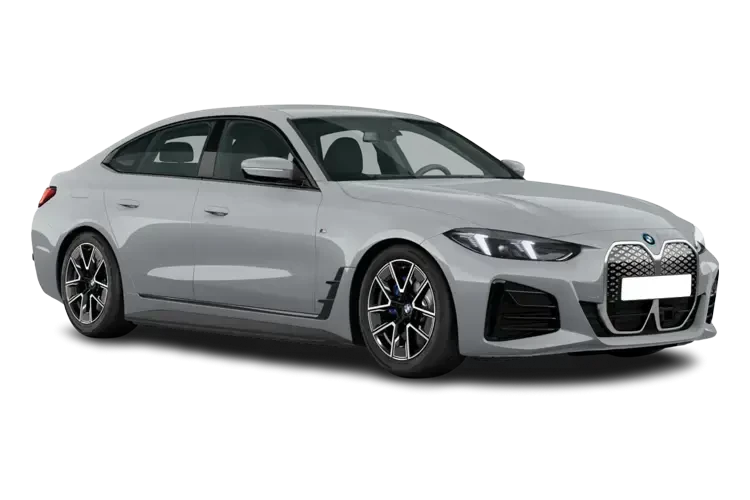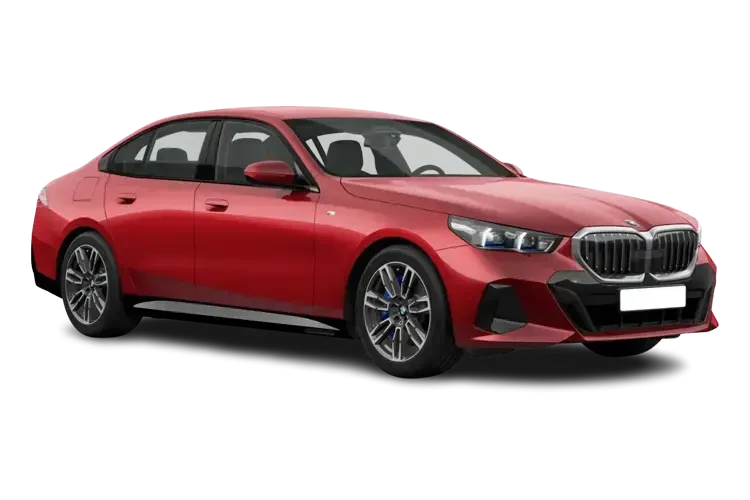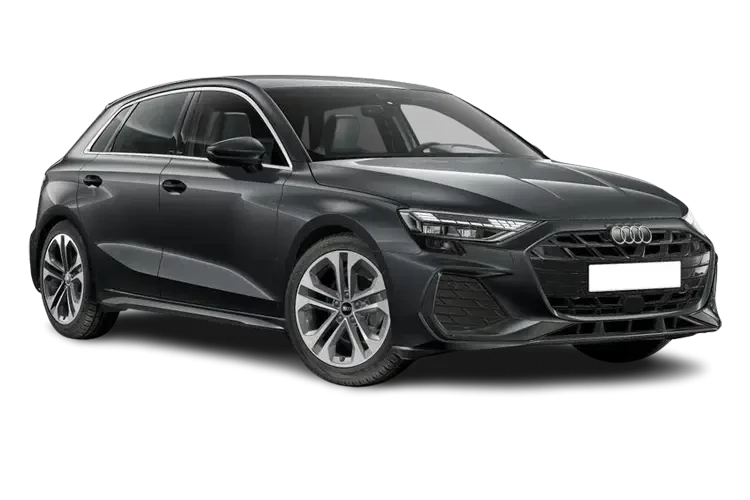Business Car, Leasing & Finance Options, How to Obtain the Correct Credit For You?
Whether you’re a new start-up or an established company, understanding how to lease or buy a vehicle through your business can help you manage costs, optimise tax benefits, and improve cash flow.
Many business owners ask: “Should I lease or buy a car through my company?” Well, it's not always a straightforward decision.
So, whether you are looking to obtain credit for a business vehicle, reduce your tax liabilities, or improve your cash flow, the right credit option for you depends entirely on your circumstances.
But how do you know if leasing or buying is right for you?
Well, in this business car leasing and company car finance guide, we will break down the main ways of running a car through your business, the tax considerations, and the pros and cons of each approach, to help give you a more informed decision on what is right for you. Alternatively, why not give our team a call today to discuss your options now, and they can help walk you through the options you have to hand.
Contact Fleetsauce Today! Get in Touch
How to Lease a Car Through a Business?
Business car leasing, also known as Business Contract Hire (BCH), really is a straightforward way for companies to access brand new vehicles without the commitment of ownership. Here, for instance, agreements typically run for two to four years, after which the car is returned, removing the hassle of you then managing any depreciation or resale.
Monthly Rentals
Monthly rentals are then the fixed payments you make for the duration of your lease contract. These will then cover the use of the vehicle for your defined contract, and you can also include maintenance within this cost as well, to help with your budgeting.
Road Tax
Road tax is also normally included as standard, so your monthly payment is also predictable and easy to manage here as well. You can then tailor the lease contract to suit your needs, adjusting the initial rental, annual mileage, contract length, and whether maintenance is added to the monthly cost or not.
End of the Lease
Then, at the end of the lease, the vehicle is collected, and your business then has the option to start a new agreement with a different model. While some funders may offer you the chance to purchase the car, business leasing is generally designed as a return-and-renewal arrangement, keeping your vehicles up to date with minimal administration needed from your end as a result.

Is it Worth Leasing My Car Through a Business?
Leasing through a limited company can offer you a lot of advantages. For instance, here the agreement is taken out in the business name rather than your own, which means the liability generally sits with the company.
Then in the event the business faces financial difficulties, you are not usually personally responsible for the lease, nor is it accounted for when it comes for you getting any personal finance as well.
Director’s Guarantee
It is important to note, however, that some funders may request a director’s guarantee. This would make you personally liable if the business could no longer meet its obligations, so it’s worth considering this aspect carefully before signing an agreement.
Fully tax-deductible
When it comes to your lease payments, under an operating lease, they are then fully tax-deductible. As here the company takes care of all the admin and payments, and you simply get a brand-new car to drive.
Claim VAT Back
You can also claim the VAT back on the lease payments as well if the company is VAT registered.
How much depends on the vehicle usage:
- If the car is used 100% for your business, you can claim back 100% of the VAT.
- If there is any private use (which is usually the case), only 50% of the VAT can be claimed back in this instance.
Options for Running a Car Through the Business
Once you decide to run a car through your business, there are several ways that you can then structure it. The best option depends on your specific situation, including your current tax implications and the overall financial benefits for your business.
A key factor to always consider is how tax rules apply to the vehicle. For instance, here the car's emissions will play an important role, as company cars with lower emissions are generally more favourable to run through a business. This is because government incentives make low-emission and electric vehicles more tax-efficient, particularly when it comes to Benefit-in-Kind (BIK) charges and other reliefs.
Lease Car
Business leasing (also known as Business Contract Hire) is one of the most common ways to run a car through a company. For instance, when it comes to leasing, you pay a fixed monthly cost over a set period of time at the end of the contract, you hand the vehicle back. You then usually lease for two to four years and return it at the end of the agreement.
No Depreciation
Since you don’t own the vehicle, you don’t need to worry about depreciation on a new car, and you can upgrade to a newer model at the end of the contract.
Choose the Length of the Contract
You can also choose the length of the lease contract, mileage limit, and initial rent. Then, at the end of the contract, you return the vehicle and can then lease a new one.
Electric Car Leases
Keep in mind that leasing higher-emission vehicles can be much more expensive once the BiK tax is factored in. Electric vehicle leasing and plug-in hybrid vehicles leasing options though offer a much more favourable BiK tax rate.
Tax Benefits for Limited Companies
Limited companies can also offset up to 100% of lease payments and VAT against their corporation tax, provided the vehicle is used solely for business purposes. If maintenance is included in the lease as well, then these costs can usually be offset as well, giving additional tax relief.
Emissions also affect how much can be claimed, with some examples here being, for instance:
- Cars with CO₂ emissions of 50g/km or less – 100% of lease payments are deductible.
- Cars with CO₂ emissions over 50g/km – 85% of lease payments are deductible.
This makes low-emission and electric vehicles particularly attractive for businesses looking to maximise tax efficiency while keeping running costs predictable.
Impact on Cash Flow
Leasing a car can also significantly improve your company’s cash flow compared to buying outright. For instance, when you purchase a vehicle, the full cost is immediately deducted from your balance sheet, which can create a large one-time impact.
This can also sometimes affect your ability to secure additional lines of credit or financing if needed. With a lease, however, you pay fixed monthly amounts over a set period, which spreads the cost and reduces the immediate impact on your cash reserves.
As a result, this more predictable expense allows your balance sheet to look healthier and gives your business more flexibility to manage other investments or operational costs. For many business owners, leasing is the preferred option when cash flow is a priority, as it avoids large upfront payments while still providing access to a new, well-maintained vehicle.
Company-Owned Car
Having the company own the car is less common than it used to be, mainly due to more stringent rules based on CO₂ emissions. So if you use the car personally, you must pay BIK tax (if a limited company), which is calculated based on: The P11D value of the car (list price including VAT and optional extras) The vehicle’s CO₂ emissions Your personal income tax bracket
The Higher the Emissions, the Higher the Tax Charge
The higher the emissions, the higher the tax charge will also be, and the low-emission and electric models will also attract much lower BIK rates as well, making them significantly more cost-effective for the employer and employee.
How its Treated for Tax Differs
When a business owns or leases a vehicle, the way it’s treated for tax depends on how it’s acquired and its CO₂ emissions. For instance, these factors determine how much of the cost can be deducted from taxable profits, either as a capital allowance (for purchased cars) or as a lease expense (for leased cars).
Capital Allowances on Company-Owned Cars
If your business purchases the car outright, you can then also claim capital allowances to reflect its depreciation. This, for instance, allows you to write off part of the vehicle’s value each year against your company’s taxable profits.
Cars bought from April 2021
| Description of car | What you can claim |
|---|---|
| New and unused, CO2 emissions are 0g/km (or car is electric) | 100% first-year allowances |
| Second-hand electric car | Main rate allowances |
| New or second-hand, CO2 emissions are 50g/km or less | Main rate allowances |
| New or second-hand, CO2 emissions are over 50g/km | Special rate allowances |
Main and special rates also apply from 1 April for businesses that pay Corporation Tax, and 6 April for businesses that pay Income Tax. Here, the 100% first-year allowance rate applies from 1 April for all businesses. Find out about cars bought before 2021 on the GOV.UK website.
Writing-Down Allowances and Pools
To claim these allowances, assets are grouped into 3 pools depending on which rate applies. For instance, here you have:
| Pool Type | Annual Writing Down Allowance (WDA) Rate | CO₂ Emissions Criteria | Usage |
|---|---|---|---|
| Main Pool | 18% | CO₂ emissions of 50g/km or less | Used only for business |
| Special Rate Pool | 6% | CO₂ emissions over 50g/km | Used only for business |
| Single-Asset Pool | 18% (if CO₂ ≤ 50g/km) or 6% (if CO₂ > 50g/km) | The same CO₂ criteria apply (≤ 50g/km or > 50g/km) | Mixed business and personal use (only the business-use portion can be claimed) |
Each year, you are then able to claim the percentage allowed for the relevant pool; the remaining balance carries forward to the next accounting period. If you use an item partly for personal purposes and you’re a sole trader or in a partnership, you’ll need to place it in a separate pool. Calculate your capital allowances using either the main rate (18%) or the special rate (6%), depending on the type of asset.
Then, reduce your claim by the proportion of the asset’s use that is non-business.
Charging Mileage
Another popular option is to use a car you own personally and claim mileage for business use. HMRC does allow you to charge your company tax-free mileage rates, currently set at 45p per mile for the first 10,000 miles in a tax year and 25p per mile thereafter. These payments are, for instance, designed to cover all your running costs, including fuel, insurance, and maintenance.
If you are reimbursed less than the HMRC rate, you can claim the difference on your tax return. Journeys that then qualify include travel to client meetings, trips between workplaces, or travel to project sites. Regular commuting, however, does not qualify. So to support claims, it is important that you keep accurate records of mileage, dates, and purposes of travel, as many business owners now use mileage-tracking apps to simplify this process as well.
Run a Car Through an LLP or Partnership
Another option is to run your car through a partnership or Limited Liability Partnership (LLP). This approach can offer you significant savings, particularly if you use the vehicle mainly for business purposes.
Unlike company directors with a company-owned car, you are not subject to Benefit-in-Kind (BIK) charges here. This is because the car is treated as an asset of the partnership rather than a benefit provided to you personally, and in some cases, the car can even be transferred out of the partnership without creating a tax charge.
VAT
If the car is also used purely for business, the company may be able to reclaim the VAT paid on the lease price. For cars that are used for both business and personal purposes, VAT usually can’t be fully reclaimed, but 50% of the VAT on lease payments may be eligible. You must be VAT registered to do this.
Fleet Management
For any business running two or more vehicles, Fleet Leasing Management is a lot more of a key process, as it allows you to quickly and easily oversee and optimise every aspect of your company car leasing options or even your van leases - from the moment they are acquired until they are disposed of.
The goal here is simple: to make your vehicles safer, more efficient, and significantly cheaper to run.
As a result, this service is a lot more essential whether you own your vehicles or use business leasing (BCH).
What Are the Key Benefits of Fleet Management
There are a lot of benefits to fleet management, including, for instance:
Reduced Operating Costs
Fleet systems use technology (telematics and GPS) to monitor fuel consumption and driving styles, so by optimising routes and reducing excessive idling, they can deliver substantial savings on fuel and wear-and-tear.
Maintenance & Downtime
Maintenance scheduling is automated based on mileage or time, ensuring services are completed proactively. This prevents unexpected and costly breakdowns, keeping vehicles on the road and minimising lost working time.
Enhanced Safety & Compliance
Fleet managers monitor driving behaviour (speeding, harsh braking) to promote safer habits and ensure full compliance with regulatory requirements (such as driver licensing and vehicle checks), reducing accident risk and potential fines.
Improved Cash Flow
By accurately tracking all expenses (fuel, maintenance, insurance), fleet management provides clear data on the Total Cost of Ownership (TCO), allowing for better budgeting and financial forecasting.
In short, effective fleet management transforms a complex, time-consuming responsibility into a streamlined, cost-controlled operation, ensuring your company vehicles are always working for your bottom line.
Considering the Whole-Life Cost (WLC)
If you are also a fleet decision maker, simply comparing monthly payments is also often a false economy. As here, the most accurate way to evaluate any business vehicle is by calculating its Whole-Life Cost (WLC) - also known as Total Cost of Ownership (TCO).
This comprehensive metric, for instance, looks beyond the purchase or monthly rental price to reveal the true financial impact of your company's vehicle over its full term.
For instance, here a WLC calculation will typically include:
- The cost of finance (rentals or interest).
- Tax elements (VAT, Corporation Tax relief, BIK).
- Fuel or electric charging costs.
- Tyre replacement, servicing, and maintenance.
- Insurance and Road Fund Licence.
- The vehicle's predicted resale value (or depreciation) at the end of the term.
By using WLC, your business can then also confidently select the most cost-effective vehicle that aligns with your financial and corporate sustainability goals, even if it has a higher initial price tag, for example.

Learn More About BiK
Benefit-in-Kind (BiK) is a tax employees pay when they use a company car for personal journeys. As a result, the amount you owe does depend on the car’s value, its CO₂ emissions, and your personal income tax bracket. The higher the emissions, the higher the BiK rate – which can make a big difference to your monthly cost.
| BiK Tax Formula: Vehicle value (P11D) × BiK tax (%) × tax bracket (%) ÷ 12 = Monthly cost of BiK (£) | |||||
| Vehicle Model | P11D Value (£) | CO₂ Emissions (g/km) | BiK Tax Band (%) | Tax Bracket (%) | Monthly BiK Tax Cost (£) |
|---|---|---|---|---|---|
| Audi A3 Plug-in Hybrid | £39,125 | 9 | 9% | 40% | £117 |
| Calculation | £39,125 × 9% × 40% ÷ 12 = £117 | ||||
| BMW 3 Series Petrol | £40,715 | 148 | 35% | 40% | £475 |
| Calculation | £40,715 × 35% × 40% ÷ 12 = £475 | ||||
This highlights the cost difference when it comes to BiK, and how lower-emission vehicles can make an impact on the BiK rates.
Can I lease a car through a new business?
Yes, you can lease a car through your new business. Even if your company has just started trading, you may still be able to apply for a business lease.
Here, reputable lenders will have their own requirements for your business to provide evidence of its viability and ability to meet payments.
Typically, as the business owner or director, you will be asked to provide the following:
-
Business details - including company name, address, registration number and annual revenue.
-
Director’s full name, date of birth and marital status
-
Business bank details - including name of the bank, account number and sort code.
Additional Documents
Additional documents may be required if the business has been trading for less than 2 years.
This may include the following:
-
3 months’ business bank statements and/or audited accounts
-
Management accounts
-
A director’s guarantee to continue paying for the lease car if a limited company can no longer meet the payments.
One way that makes it easier for a new business to finance a vehicle lease is to pay a higher initial rental, or, depending on the company you use, there may be higher interest payable

What Cars Are Best for Business Leasing?
With current tax rules and Benefit-in-Kind (BiK) considerations, low-emission vehicles are the real stars when it comes to business leasing.
Top EVs and PHEVs
How the Lease Order Process Works
Disclaimer
This information is for guidance only and does not constitute tax advice. Please consult your accountant or tax adviser for advice specific to your business.
Frequently Asked Questions
Our finance partners will carry out a credit check to approve you for your chosen lease. It’s a good idea to know your credit status beforehand, because being declined could have an impact on your credit score.
If you’re unsure, you can check your credit score with a credit reference agency before applying, which can help you understand your likelihood of being approved for a lease.
Yes, it is required. When we submit your application to our finance providers, they will carry out a credit check to see if you qualify for funding. Please note that if a finance company declines your application, it could have a negative impact on your credit score.
If your application for a business van lease is declined by one of our finance partners, it may be because your credit history is seen as too high a risk. To improve your chances in the future, focus on strengthening your credit by making all payments on time and in full.
Yes, you must pass a credit check to be approved for a car lease.
Yes, having a guarantor can improve your chances of being approved for a van lease. A guarantor agrees to take responsibility for the lease if you’re unable to make the payments, which reduces the risk for the finance company.
After filling in and submitting the form credit usually takes around 24 hours to be approved or rejected although it can sometimes be quicker or longer.
- You must be at least 18 years old.
- You need a full, valid UK driving licence.
- You should have three years’ employment history.
- A reasonable credit rating.
If you have poor credit, leasing companies may decline your application or request a guarantor.
Yes, VAT is included in your monthly payments. Your quote will show the exact amount.
After we’ve submitted your details to the finance company for a car lease, they’ll carry out credit and affordability checks. This process usually takes anywhere from 1 working day up to a week.
Yes, you’ll need to pay an initial rental when leasing a car. The minimum is usually the equivalent of 1 month’s rental upfront, but most agreements offer options of 1, 3, 6, 9, or 12 months. You can tailor the contract to suit your budget and preferences.






